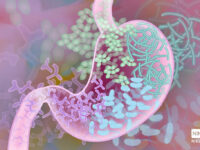Picture this: you’re sitting in a room surrounded by loved ones, but no one truly cares or understands what you are thinking. You’re isolated, detached from all that matters. This is the feeling of loneliness that plagues so much of the American population: not necessarily alone, but lonely. In a time where the world is more interconnected than ever, thanks to digital communication, perceived isolation (the feeling of having less meaningful relationships than desired) has taken a firm grip.
Certain population demographics are prone to higher loneliness rates, a trend which will likely only increase over the next several years given the current political climate. One such trend can be found by looking at age, with those at each end of the continuum (below 18 and above 80 year olds) experiencing transitional phases in their lives being some of the most widely affected. Furthermore, recent events such as the COVID-19 pandemic and its subsequent social isolation can be to blame. Although social media is a way to stay in contact and bridge the physical gap, it often has the contradicting effect as we compare ourselves to others and feel discontent.
Not only does loneliness affect feeling and self-worth, it can also take a physical toll on our bodies. A meta-analysis published in the Association of Psychological Sciences revealed an increased mortality rate of 26% for those afflicted with loneliness when compared to their emotionally fulfilled counterparts. This uptick in mortality may be explained by the side effects accompanying loneliness, which include psychiatric disorders (including depression and dementia), cardiovascular disease, Type II diabetes, and even increases in susceptibility to common illnesses such as the flu.
While the body is a complex biological system which can create difficulties in diagnosing issues, researchers believe that one way loneliness enacts its ill-effects is through the increased release of hormones such as cortisol. Cortisol is responsible for regulating important functions including metabolism and glucose release, which provides energy that allows our bodies to function. Increases in cortisol have been linked to issues in this regulation. Additionally, increased cortisol can reduce the length of disease-preventing telomeres, which are protective caps on the ends of our chromosomes. These caps help to prevent the shortening of our chromosomes, which prolongs aging and prevents disease.
“A meta-analysis published in the Association of Psychological Sciences revealed an increased mortality rate of 26% for those afflicted with loneliness.”
Research is ongoing about what the CDC has dubbed the “epidemic of loneliness.” Other possible biological components involved include oxytocin, a neurochemical which helps regulate many social interactions and is a key facilitator of relationship building.
Luckily, there are ways to reduce loneliness and reverse its negative effects. Making new connections or deepening current ones, engaging in activities you enjoy, and even giving back to the community has a tremendous impact on combating the epidemic.
- Neuroscience and Biobehavioral Reviews (2024). DOI: 10.1016/j.neubiorev.2024.105734
- eClinicalMedicine (2023). DOI: 10.1016/j.eclinm.2023.102395
- StatPearls (2023). PMID: 30855827
- Nature Reviews Disease Primers (2022). DOI: 10.1038/s41572-022-00355-9
- Psychoneuroendocrinology (2021). DOI: 10.1016/j.psyneuen.2021.105413
- Psychoneuroendocrinology (2019). DOI: 10.1016/j.psyneuen.2019.01.006
- Perspectives on Psychological Science (2015). DOI: 10.1177/1745691614568352

